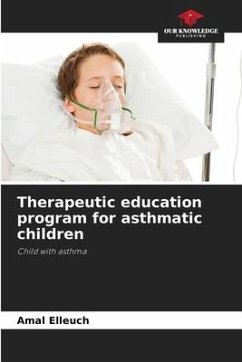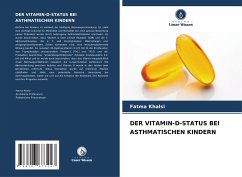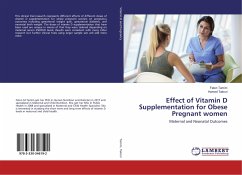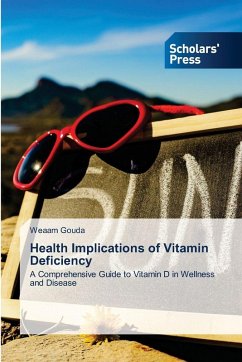
VITAMIN D STATUS IN ASTHMATIC CHILDREN
Versandkostenfrei!
Versandfertig in 6-10 Tagen
29,99 €
inkl. MwSt.

PAYBACK Punkte
15 °P sammeln!
Asthma in children is the most common respiratory disease worldwide. It is a major cause of morbidity and mortality. An accurate assessment of its prevalence has been hampered by the heterogeneity of asthma definitions. It has been described that vitamin D possesses an immunomodulatory effect via its receptor (VDR) and 1-alpha-hydroxylase, which are present in T and B lymphocytes, macrophages and antigen-presenting cells. Thus, 25 hydroxy-vitamin D (25 OH D) reduces the proliferation of T lymphocytes (particularly Thelper-1 [Th1] and Th17 lymphocytes) and the production of certain "pro-inflamm...
Asthma in children is the most common respiratory disease worldwide. It is a major cause of morbidity and mortality. An accurate assessment of its prevalence has been hampered by the heterogeneity of asthma definitions. It has been described that vitamin D possesses an immunomodulatory effect via its receptor (VDR) and 1-alpha-hydroxylase, which are present in T and B lymphocytes, macrophages and antigen-presenting cells. Thus, 25 hydroxy-vitamin D (25 OH D) reduces the proliferation of T lymphocytes (particularly Thelper-1 [Th1] and Th17 lymphocytes) and the production of certain "pro-inflammatory" cytokines (particularly Il-2, Il-6 and IFN-Gamma), and it has also been described that the vitamin reduces mainly viral respiratory infections and improves lung function. The interaction between asthma and vitamin D has been studied over the past two decades. This interaction is multi-faceted and has potential clinical implications for asthmatic patients, affecting disease severity, control and prognosis.














